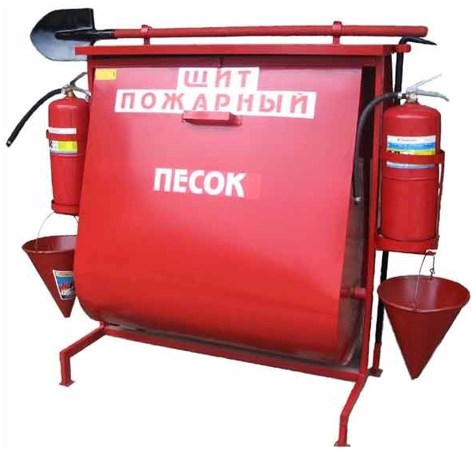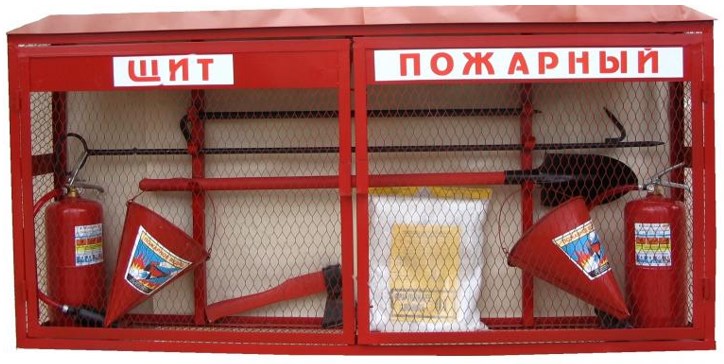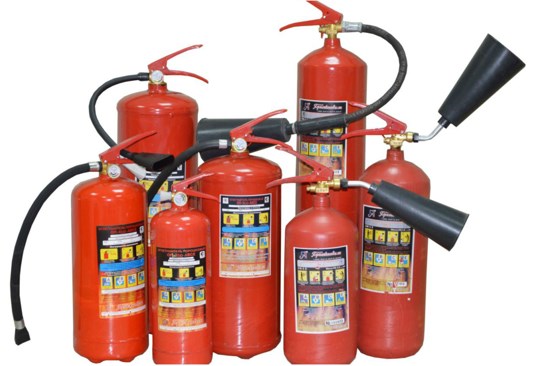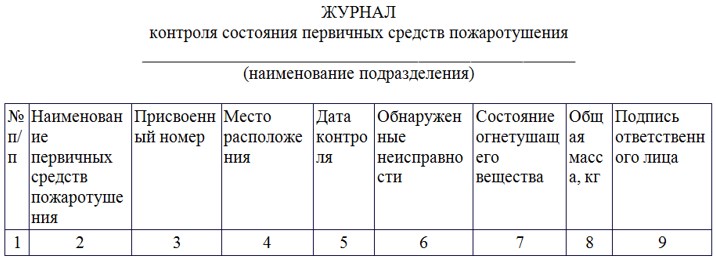Primary fire extinguishing media: need for use, classification, area of use
When calculating how much and what primary fire extinguishing means are needed at the enterprise, physical and chemical properties are taken into account, as well as the degree of fire hazard and flammability of all substances that are used in production or stored in warehouses.
For optimal placement of materials and extinguishing agents, the area and configuration of the organization's territory should be taken into account.
Primary fire extinguishing means include:
- Fire extinguishers of various types;
- Fire hydrants;
- Fire fighting equipment:
- Barrels of water;
- Sand boxes;
- Felt or felt;
- Asbestos cloth;
- Extinguishing tools:
- Buckets;
- Baghry;
- Shovels;
- Axes;
- Scrap, etc.
Tools and inventory
The cheapest and easiest to store material for the primary fire extinguishing after water is sand... It is used mainly for extinguishing liquid combustible substances (gasoline, natural and artificial oils, paintwork materials, kerosene, etc.), localizing small foci of fire and preventing their spread.
There are several simple rules for storing sand:
- Boxes with a volume of 0.5 to 3m 3 should have a sufficiently wide lid to provide free access to the contents.
- It is allowed to use shortened metal barrels with lids for storage.
- The container should be installed in a place inaccessible to rain or snow.
- The suitability of sand for use is checked up to twice a year.
In the process of extinguishing liquid substances, sand should not be poured onto the combustion center - the burning liquid will be sprayed. Sprinkle the outer edge of the combustion zone and only then shovel the sand onto the liquid.
Felt, felt, asbestos cloth - are used to extinguish small fires by throwing material on the fire to stop air access. It is produced in the form of canvases with an area of at least 1 × 1 m, while felt and felt are impregnated with fire retardants. Storage of rolled materials should be carried out rolled up in a metal box, in a room with low humidity, so that the canvas does not rot. The use of these extinguishing materials is not very effective, therefore they are more often used to protect valuable stationary equipment during extinguishing by other means. 
Baggars, axes, crowbars are used to open rooms or separate burning structural elements. They are placed on fire shields.
Fire shields
The devices are used for fastening and placing fire-fighting equipment and auxiliary tools in premises for various purposes and in the internal territory of the organization. They must be installed in accessible places, the passage to which must not be blocked. 
The following information should be displayed on the fire panel:
- serial number, format ПЩ № ...;
- information about the person responsible for the operation;
- the telephone number of the fire department;
- inventory of primary fire extinguishing means.
It is allowed to set up a fire shield in a specialized cabinet or behind a protective panel or door. The closing elements of the structure can be connected with plastic seals so that at any time the seal can be easily torn off and have direct access to the contents.
Fire extinguishers
 The most popular available fire extinguishing means are various types of fire extinguishers. At the moment, fire extinguishers are distinguished by the type of extinguishing agent (OV):
The most popular available fire extinguishing means are various types of fire extinguishers. At the moment, fire extinguishers are distinguished by the type of extinguishing agent (OV):
- Powder - OP;
- Carbon dioxide - ОУ;
- Air-foam - ORP.
Their widespread use is due to a long period of operation, high efficiency and relatively low cost. In addition, almost all products, regardless of the type of extinguishing agent, have a similar activation principle.
The use of primary fire extinguishing means - fire extinguishers, even with the same extinguishing agents, may differ slightly depending on the design features of the product. However, the basic sequence of actions is the same:
- The seal is removed and the blocker is removed - a safety check;
- The mechanism of access to the OV is activated: a button or a lever;
- A stream of organic matter is directed to the fire site using a special nozzle of a socket or a hose.
Powder fire extinguisher
Has the following specificity. The place of extinguishing must necessarily be located between the source of fire and the exit from the room. Escape routes and in no case should intersect with a cloud of powder, as it completely clogs the airways and eyes. The use of such a fire extinguisher in a small confined space is recommended only in combination with personal protective equipment. It is allowed to use for extinguishing equipment under voltage up to 1 kV.
Carbon dioxide fire extinguisher
It has good dielectric properties and is allowed for extinguishing connected electrical installations with voltages up to 1 kV. However, its long-term use for extinguishing has a number of features. A significant decrease in oxygen in the room can lead to unconsciousness of the people there. The temperature of the material of the outlet flare can drop to -60 ° C, which can lead to frostbite. When using, it is recommended to use personal protective equipment.
Air foam fire extinguisher
It is forbidden to extinguish non-powered electrical installations, as in a composition that can conduct electrical voltage.
Everything fire extinguishers should be placed in visible places near emergency exits... The height of the attachment is not more than 1.5 m. It should be noted that the effectiveness of actions during a fire depends not only on the availability and serviceability of fire extinguishers, but also on how well the organization's employees know the rules for using primary fire extinguishing means.
The video provides instruction on the rules for using primary fire extinguishing equipment:
Control over primary fire extinguishing equipment and regulatory framework
The presence, quantity and placement, as well as the rules for using fire extinguishing means in an organization, are regulated by the following regulatory documents:
- FZ-123 and FZ-315 (Federal Law of the Russian Federation);
- SNiP 21-01-97;
- GOST 12.1.004-91;
- GOST 26342-84;
- NPB 110-03 (Fire safety standards);
- P 78.36.004-2002 (List of technical means).
The main regulatory document, which should be guided by the fire safety engineer of an enterprise or organization, is "Instructions for the maintenance and use of fire extinguishing equipment." It should be noted that for various sectors of the national economy, the content of the instructions can vary significantly. However, its main provisions remain unchanged, according to them, a fire safety engineer or a responsible employee is obliged to:
- Develop instructions for various parts of the organization and keep logs of other fire safety documentation. Conduct training for employees of the organization in accordance with the instructions drawn up.
- Calculate the need for fire extinguishing equipment, and submit proposals for their purchase and installation to the organization's management.
- Conduct periodic, selective and comprehensive checks of fire extinguishing equipment. Based on their results, if necessary, write off, purchase or maintain these devices.
- Maintain all necessary documentation, the main one being "".
 The journal is filled in and kept in accordance with the standard instructions for the maintenance and use of primary fire extinguishing means at facilities - RD 34.49.503 - 94:
The journal is filled in and kept in accordance with the standard instructions for the maintenance and use of primary fire extinguishing means at facilities - RD 34.49.503 - 94:
- The schedule for scheduled inspections is drawn up in advance, the frequency of inspections depends on the specific type of device or fire extinguishing system and must comply with the maintenance regulations;
- In the course of the check, not only the pressure according to the indicator indicators, but also the appearance of the cylinder, the presence of dents, cracks and other defects are recorded in the log;
- In the absence of an external indicator, weighing is carried out, the data is compared with the indicators entered in the log, based on the difference, a decision is made on the maintenance of the device.






